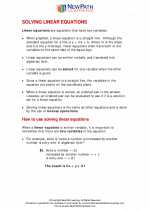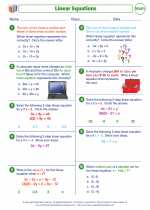Exosphere Study Guide
The exosphere is the outermost layer of Earth's atmosphere. It is located above the thermosphere and extends out into space. Here are some key points to understand about the exosphere:
Characteristics of the Exosphere:
- 1. It is the outermost layer of the Earth's atmosphere.
- 2. It is very thin and contains low-density gases such as hydrogen and helium.
- 3. The exosphere does not have a definite outer boundary, as it gradually transitions into outer space.
- 4. This layer is where satellites and other human-made objects orbit the Earth.
Key Concepts to Remember:
When studying the exosphere, it's important to understand the following concepts:
- Low Density: The exosphere contains very few particles, leading to its low density and lack of distinct boundaries.
- Transition to Space: Unlike the other layers of the atmosphere, the exosphere gradually transitions into outer space, rather than having a clear boundary.
- Satellite Orbits: This layer is crucial for satellite orbits and the movement of human-made objects in space.
Study Tips:
When preparing for a test or exam on the exosphere, consider the following study tips:
- Visual Aids: Use diagrams and illustrations to understand the location and characteristics of the exosphere.
- Real-World Examples: Explore how the exosphere is relevant to satellite technology and space missions.
- Compare and Contrast: Compare the exosphere to other layers of the atmosphere to understand its unique properties.
By focusing on these key points and study tips, you can gain a thorough understanding of the exosphere and its significance in the Earth's atmosphere and beyond.
.◂Math Worksheets and Study Guides Eighth Grade. Solving linear equations
Study Guide Solving linear equations
Solving linear equations  Worksheet/Answer key
Worksheet/Answer key Solving linear equations
Solving linear equations  Worksheet/Answer key
Worksheet/Answer key Solving linear equations
Solving linear equations  Worksheet/Answer key
Worksheet/Answer key Solving linear equations
Solving linear equations  Worksheet/Answer key
Worksheet/Answer key Solving linear equations
Solving linear equations  Worksheet/Answer key
Worksheet/Answer key Solving linear equations
Solving linear equations 

 Worksheet/Answer key
Worksheet/Answer key
 Worksheet/Answer key
Worksheet/Answer key
 Worksheet/Answer key
Worksheet/Answer key
 Worksheet/Answer key
Worksheet/Answer key
 Worksheet/Answer key
Worksheet/Answer key

The resources above cover the following skills:
Algebra (NCTM)
Represent and analyze mathematical situations and structures using algebraic symbols.
Use symbolic algebra to represent situations and to solve problems, especially those that involve linear relationships.